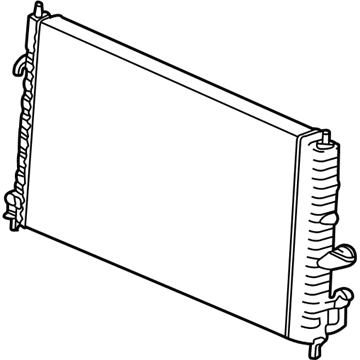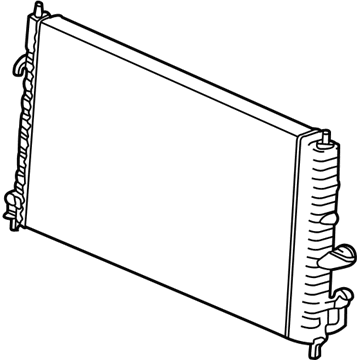
My Garage
My Account
Cart
Genuine Saturn LS Radiator
Cooling Radiator- Select Vehicle by Model
- Select Vehicle by VIN
Select Vehicle by Model
orMake
Model
Year
Select Vehicle by VIN
For the most accurate results, select vehicle by your VIN (Vehicle Identification Number).
2 Radiators found
Saturn LS Radiator
Radiator is that part of Saturn LS vehicles' system which takes heat from the coolant water pumped in by a water pump and then expels it to the air with the help of a heat exchanger. Normally, Saturn LS Radiators utilize fins and tubes core along with inlet and outlet tanks In most cases, the core is built out of aluminum elements, still, a few include copper / brass ones. The basic purpose of the Radiator, therefore, is to dissipate heat from the engine well with performance radiators being products whose material and construction offer better heat shedding. These are larger tubes, higher fin density, and better heat and fluid dynamics to enhance convection and achieve better cooling of the engine. Regardless of being produced as direct-fitment or universal models, Saturn LS Radiators are critically involved in maintaining efficient and long-lasting engine operations.
Each OEM Saturn LS Radiator we offer is competitively priced and comes with the assurance of the manufacturer's warranty for the part. Furthermore, we guarantee the speedy delivery of your orders right to your doorstep. Our hassle-free return policy is also in place for your peace of mind.
Saturn LS Radiator Parts Questions & Experts Answers
- Q: How to remove a radiator on Saturn LS?A:To remove the radiator, start by disconnecting the cable from the negative battery terminal and draining the cooling system. If the coolant is still in good condition, it can be saved and reused. Next, remove the puller cooling fan and raise the vehicle, securely placing it on jackstands. On automatic transaxle models, disconnect the transaxle oil cooler lines from the radiator. Then, disconnect the upper and lower radiator hoses, either by loosening the hose clamp or cutting off and replacing the hose if necessary. Remove the bolts from the condenser and radiator mounting brackets, as well as the radiator support brackets. Pull down the condenser and pusher fan assembly slightly to disengage the condenser from the radiator brackets. Carefully lift out the radiator, being cautious not to spill coolant or scratch the paint. Ensure that the rubber radiator insulators remain in place for proper reinstallation. Before installation, clean the radiator of bugs and dirt using compressed air and a soft brush, while avoiding bending the cooling fins. Inspect the radiator for leaks and damage, and have it repaired by a radiator shop if needed. To install the radiator, inspect the rubber insulators in the lower crossmember and ensure they are free of cracks and debris. Seat the radiator correctly on the insulators before fastening the top brackets. Fill the cooling system with the appropriate mixture of antifreeze and water, reconnect the battery, and start the engine to check for leaks. Allow the engine to reach normal operating temperature, indicated by the upper radiator hose becoming hot, and recheck the coolant level. If working on an automatic transaxle-equipped vehicle, check and add fluid as necessary.









